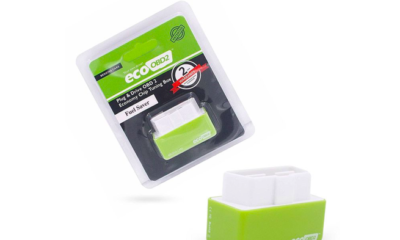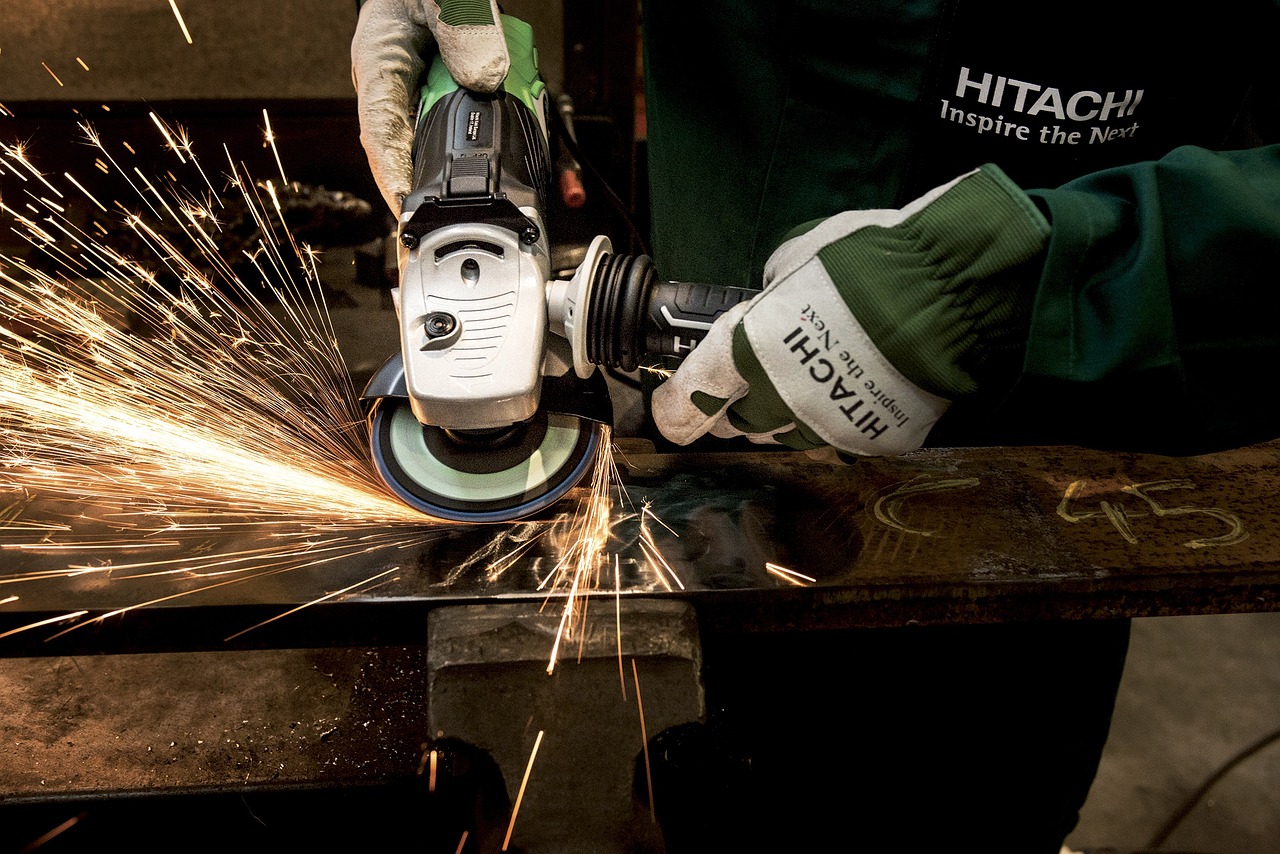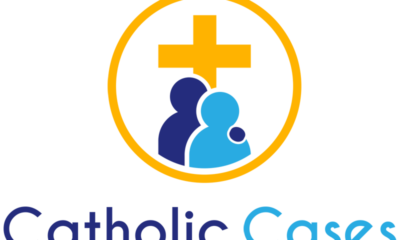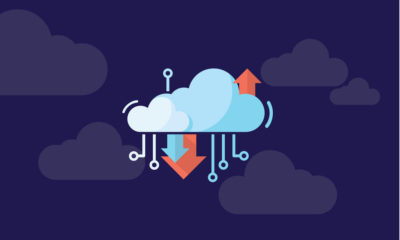Business
Benefits, Process, Cons: Everything You Need to Know About Modern Medical Record Retrieval Platforms

By: Georgette Virgo
The digital revolution has transformed modern life, reshaping how people work, communicate, and access information. Technology has become indispensable to people’s daily routines, from smart homes to AI-powered assistants. Businesses have undergone radical transformations, adopting cloud-based systems, using big data analytics, and embracing remote work models.
Healthcare and legal services demonstrate this shift in the evolution of medical record retrieval. The industry has moved past dusty file rooms and time-consuming manual searches. Today, medical professionals, legal teams, and patients use digital electronic health records (EHRs) and cloud-based storage systems. This transition promises faster access to critical information and improved patient care but also brings challenges.
For those grappling with the complexities of modern medical retrieval, Grady Marin, founder and CEO of The Records Company, provides a quick guide explaining how medical record retrieval platforms work, their benefits, and the considerations of this essential technology.
The Medical Record Retrieval in a Nutshell
Medical record retrieval is obtaining a patient’s medical history from various healthcare providers or facilities. That history includes diagnoses, treatments, medications, and other pertinent health-related data that healthcare providers have recorded.
This process is essential for healthcare providers, legal professionals, and insurance companies, as it guarantees access to complete and accurate medical information necessary for delivering quality care, supporting legal claims, and facilitating medical research.
The retrieval process often requires obtaining patient consent, adhering to privacy laws such as the Health Insurance Portability and Accountability Act (HIPAA), and coordinating with healthcare organizations to secure the required documentation.
Grady Marin explains that the value of modernizing medical record retrieval lies in its cross-industry applications and the efficiencies it introduces. In the legal sector, medical records are crucial for establishing causation, evaluating the extent of injuries, and supporting expert testimony in cases involving personal injury, medical malpractice, or workers’ compensation.
The transition to digital records has reduced the required physical storage space and enhanced the ability to transport records securely and efficiently across different entities.
Marin mentions, “The shift to digital record retrieval wasn’t just about keeping up with technology. It was a necessary evolution to meet the growing demands of healthcare and legal professionals who require quick, accurate access to medical information.”
How Modern Medical Record Retrieval Platform Works
Modern medical record retrieval platforms, like The Records Company, have changed how healthcare professionals, legal teams, and patients access vital medical information. These digital systems streamline the once cumbersome process of obtaining medical records, offering a user-friendly interface that simplifies retrieval.
Users can initiate requests, track progress, and receive documents through a secure online portal. This eliminates the need for time-consuming phone calls, faxes, or in-person visits to healthcare facilities. This digital transformation saves time, enhances accuracy, and reduces the risk of errors in the manual handling of sensitive medical information.
For instance, The Records Company allows users to request medical records through a simple login process, accessible from anywhere with an internet connection. Marin explains that users can submit requests once logged in, which are then monitored in a centralized database. This process makes certain that every retrieval process is tracked and managed effectively.
Using state-of-the-art technology and the proficiency of hands-on professionals, the company offers a reliable service that can be accessed without leaving one’s home or office. As the company receives records, it digitizes them (if they are not already in digital format), indexes them, and makes them available to the requester through a secure online platform.
This blend of technological innovation and human oversight expedites the retrieval process and maintains the high level of accuracy and confidentiality essential in handling medical records.
“Our platform is designed with user experience in mind,” Marin states. “We’ve created a system where every step of the retrieval process is transparent and trackable. Users can submit requests, monitor progress, and access records from a single, intuitive interface.”
Considerations and Challenges
While the benefits of digital record retrieval are substantial, Marin admits there are considerations to consider. Modern medical record retrieval platforms, like The Records Company, require reliable internet connectivity for access, which may be a challenge in some areas.
However, aside from the internet connection needed to access the platform, there is also a learning associated with new technology. Marin mentions how some users, mainly those accustomed to traditional methods, may find the transition challenging.
More importantly, like any other digital platform, there is a risk in the security of sensitive medical information, necessitating robust cybersecurity measures.
Marin mentions, “We understand the concerns about data security and accessibility. That’s why The Records Company has invested heavily in reliable encryption and security protocols. We also have support staff available for users who may not be tech-savvy, ensuring everyone can benefit from our platform.”
Balancing the Pros and Cons
Despite the potential challenges of modern medical record retrieval, Marin believes the benefits far outweigh any drawbacks. He mentions, “While there are valid concerns around connectivity, security, and user adaptability, the advantages of digital platforms are simply too significant to ignore.”
Records, such as a patient’s complete medical history, can now be retrieved and delivered quickly, a crucial factor in time-sensitive healthcare and legal matters. This enables healthcare providers to make informed decisions without the delays associated with traditional paper-based systems.
More importantly, a modern medical record retrieval platform eliminates the need for physical storage, reduces manual labor, and cuts down on shipping expenses that requesters need to access records. Marin can then redirect these savings toward improving patient care and legal services.
With both opportunities and risks, it is crucial to approach modern medical record retrieval with a balanced perspective. This is where the importance of trusted and reliable platforms, like The Records Company, comes into play. Professionals and individuals can confidently embrace the platform’s advantages by carefully considering the pros and cons of medical record retrieval, knowing that the necessary safeguards are in place to protect patient privacy and appropriate use.
Business
13 Reasons Investors Are Watching Phoenix Energy’s Expansion in the Williston Basin

As energy security becomes a growing priority in the United States, companies focused on domestic oil production are gaining attention from investors. One such company is Phoenix Energy, an independent oil and gas company operating in the Williston Basin, a prolific oil-producing region spanning North Dakota and Montana.
Phoenix Energy has established itself as a key player in this sector, expanding its footprint while offering structured investment opportunities to accredited investors. Through Regulation D 506(c) corporate bonds, the company provides investment options with annual interest rates ranging from 9% to 13%.
Here are 13 reasons why Phoenix Energy is attracting investor interest in 2025:
1. U.S. energy production remains a strategic priority
The global energy landscape is evolving, with a renewed focus on domestic oil and gas production to enhance economic stability and reduce reliance on foreign energy sources. The Williston Basin, home to the Bakken and Three Forks formations, continues to play a critical role in meeting these demands. Phoenix Energy has established an operational footprint in the basin, where it is actively investing in development and production.
2. Investment opportunities with fixed annual interest rates
Phoenix Energy bonds offer accredited investors annual interest rates between 9% and 13% through Regulation D 506(c). These bonds help fund the company’s expansion in the Williston Basin, where it acquires and develops oil and gas assets.
3. Record-breaking drilling speeds in the Williston Basin
Phoenix Energy has made significant strides in drilling efficiency, ranking among the fastest drillers in the Bakken Formation as of late 2024. By reducing drilling times, the company aims to optimize operations and improve overall production performance.
4. Expansion of operational footprint
Since becoming an operator in September 2023, Phoenix Energy has grown rapidly. As of March 2025, the company has 53 wells drilled and 96 wells planned over the next 12 months.
5. Surpassing production expectations
Phoenix Energy’s oil production has steadily increased. By mid-2024, its cumulative production had exceeded 1.57 million barrels, outpacing its total output for 2023. The company projected an exit rate of nearly 20,000 barrels of oil equivalent per day by the end of March 2025.
6. High-net-worth investor offerings
For investors seeking alternative investments with higher-yield opportunities, Phoenix Energy offers the Adamantium bonds through Reg D 506(c), which provides corporate bonds with annual interest rates between 13% and 16%, with investment terms ranging from 5 to 11 years, and a minimum investment of $2 million.
7. Experienced team with industry-specific expertise
Phoenix Energy’s leadership and technical teams include professionals with decades of oil and gas experience, including backgrounds in drilling engineering, land acquisition, and reservoir analysis. This level of in-house expertise supports the company’s ability to evaluate acreage, manage operations, and execute its long-term development plans in the Williston Basin.
8. Focus on investor communication and understanding
Phoenix Energy prioritizes clear investor communication. The company hosts webinars and provides access to licensed professionals who walk investors through the business model and operations in the oil and gas sector. These efforts aim to help investors better understand how Phoenix Energy deploys capital across mineral acquisitions and operated wells.
9. Managing market risk through strategic planning
The energy sector is cyclical, and Phoenix Energy takes a structured approach to risk management. The company employs hedging strategies and asset-backed financing to help mitigate potential fluctuations in the oil market.
10. Commitment to compliance
Phoenix Energy conducts its bond offerings under the SEC’s Regulation D Rule 506(c) exemption. These offerings are made available exclusively to accredited investors and are facilitated through a registered broker-dealer to support adherence to federal securities laws. Investors can review applicable offering filings on the SEC’s EDGAR database.
11. Recognition for business practices
As of April 2025, Phoenix Energy maintains an A+ rating with the Better Business Bureau (BBB) and is a BBB-accredited business. The company has also earned strong ratings on investor review platforms such as Trustpilot and Google Reviews, where investors often highlight clear communication and transparency.
12. A family-founded business with a long-term vision
Led by CEO Adam Ferrari, Phoenix Energy operates as a family-founded business with a focus on long-term investment strategies. The company’s leadership emphasizes responsible growth and sustainable development in the Williston Basin.
13. Positioned for long-term growth in the oil sector
With U.S. energy demand projected to remain strong, Phoenix Energy is strategically positioned for continued expansion. The company’s focus on efficient drilling, financial discipline, and structured investment offerings aligns with its goal of building a resilient and growth-oriented business.
Final thoughts
For investors looking to gain exposure to the U.S. oil and gas sector, Phoenix Energy presents an opportunity to participate in a structured alternative investment backed by the company’s operational expansion in the Williston Basin.
Accredited investors interested in learning more can attend one of Phoenix Energy’s investor webinars, which are hosted daily throughout the week. These sessions provide insights into market trends, risk management strategies, and investment opportunities.
For more information, visit the Phoenix Energy website.
Phoenix Capital Group Holdings, LLC is now Phoenix Energy One, LLC, doing business as Phoenix Energy. The testimonials on review sites may not be representative of other investors not listed on the sites. The testimonials are no guarantee of future performance or success of the Company or a return on investment. Alternative investments are speculative, illiquid, and you may lose some or all of your investment. Securities are offered by Dalmore Group member FINRA/SIPC. Dalmore Group and Phoenix Energy are not affiliated. See full disclosures.
This article contains forward-looking statements based on our current expectations, assumptions, and beliefs about future events and market conditions. These statements, identifiable by terms such as “anticipate,” “believe,” “intend,” “may,” “expect,” “plan,” “should,” and similar expressions, involve risks and uncertainties that could cause actual results to differ materially. Factors that may impact these outcomes include changes in market conditions, regulatory developments, operational performance, and other risks described in our filings with the U.S. Securities and Exchange Commission. Forward-looking statements are not guarantees of future performance, and Phoenix Energy undertakes no obligation to update them except as required by law.
-

 Tech4 years ago
Tech4 years agoEffuel Reviews (2021) – Effuel ECO OBD2 Saves Fuel, and Reduce Gas Cost? Effuel Customer Reviews
-

 Tech6 years ago
Tech6 years agoBosch Power Tools India Launches ‘Cordless Matlab Bosch’ Campaign to Demonstrate the Power of Cordless
-

 Lifestyle6 years ago
Lifestyle6 years agoCatholic Cases App brings Church’s Moral Teachings to Androids and iPhones
-

 Lifestyle4 years ago
Lifestyle4 years agoEast Side Hype x Billionaire Boys Club. Hottest New Streetwear Releases in Utah.
-

 Tech6 years ago
Tech6 years agoCloud Buyers & Investors to Profit in the Future
-

 Lifestyle5 years ago
Lifestyle5 years agoThe Midas of Cosmetic Dermatology: Dr. Simon Ourian
-

 Health6 years ago
Health6 years agoCBDistillery Review: Is it a scam?
-

 Entertainment6 years ago
Entertainment6 years agoAvengers Endgame now Available on 123Movies for Download & Streaming for Free
